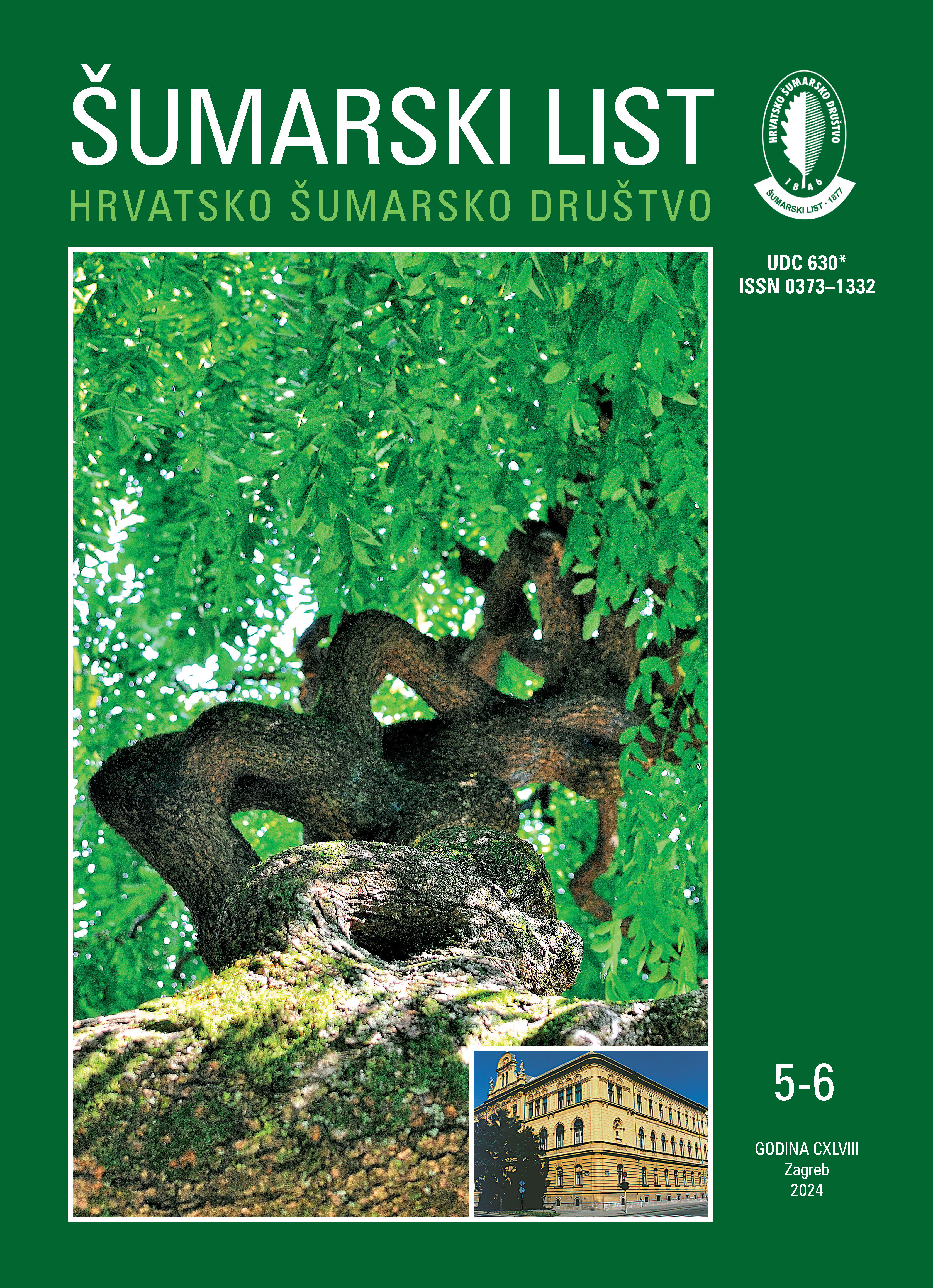Phenological traits of leafing and leaves retention of black poplar (Populus nigra L.) in the clone archive in Žepče, Bosnia and Herzegovina
Keywords:
black poplarsAbstract
Black poplar (Populus nigra L.) is a species of flood forest and today it is one of the most endangered species in Europe. In Bosnia and Herzegovina, there is significant area of unused land suitable for the reintroduction of autochthonous black poplars and the establishment of intensive and extensive plantations of hybrid and American black poplars. This research aims to determine the beginning and end of the phenological phases of leafing, as well as the winter retention of leaves, which will help in selection of suitable clones for the establishment of plantations in Bosnia and Herzegovina.
The material of 161 clones of autochthonous black poplars from 26 populations from the basins of 6 rivers and 11 clones of production hybrid poplars (Euro-American or Canadian) and American black poplars was analyzed. The clones are located in the clone archive in Žepče, which was established in 2006. Leafing phenology was observed from March 15 to April 22, 2019. and in six phenological phases: 0 - dormant bud, 1 - cracked bud, 2 - bud breaking through, 3 - bud open, leaves gathered, 4 - leaves separate, 5 - leaves fully developed). The retention of the leaves was monitored from August 30 to November 4, 2019. and evaluated in three categories: 1 - all leaves on the tree are present, 2 - 50% of the leaves are left on the tree, 3 - there are no leaves left on the tree.
Analysis of variance showed statistically significant differences between clones from different populations for the duration of the leafing phenological phases. Phenological phase 1 (buds breaking through) occurred at the earliest on 14.3. and phase 5 (fully open leaves) no earlier than 8.4. The results of leaf retention show that 4.11. all clones in the clone archive rejected the leaf 100%. The shortest effective length of the vegetation period had the clones of the Bugojno population (154 days), and the longest the clones of Populus boleana and P. Nigra var. Italica and clones of the Čapljina population (Neretva river basin); Dobrinje, Visoko, Babina Rijeka, Maglaj, Doboj (Bosna river basin); Kopači and Tegare (Drina river basin).
The results of this research will be used in the selection of the most suitable clones for reintroduction in a specific locality and for specific microclimatic conditions, especially the occurrence of late spring and early autumn frosts, for the purpose of preserving the autochthonous gene pool, as well as clones of hybrid poplars for the establishment of clonal plantations.
It is necessary to continue phenological research in the clonal test of autochthonous black poplars and hybrid poplars in Bosnia and Herzegovina, as well as to conduct research on growth properties in order to be able to compare the results of phenological research, i.e. the length of the growing season, and thickness and height growth.
Published
Issue
Section
License
Copyright (c) 2024 Mirzeta Memišević Hodžić, PhD, Prof. Dalibor Ballian, PhD

This work is licensed under a Creative Commons Attribution-NonCommercial 4.0 International License.


